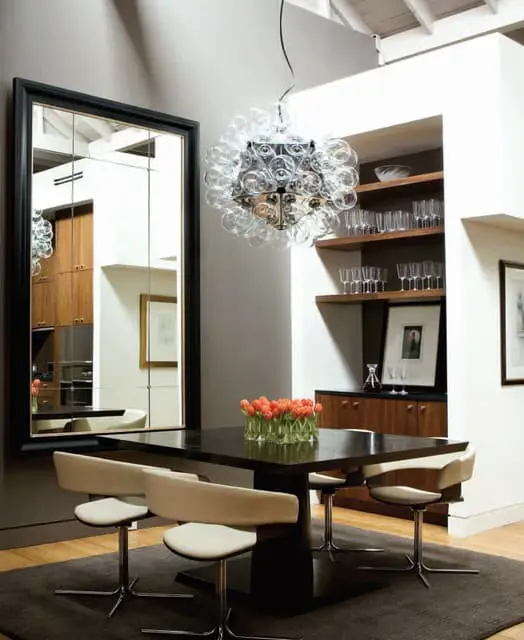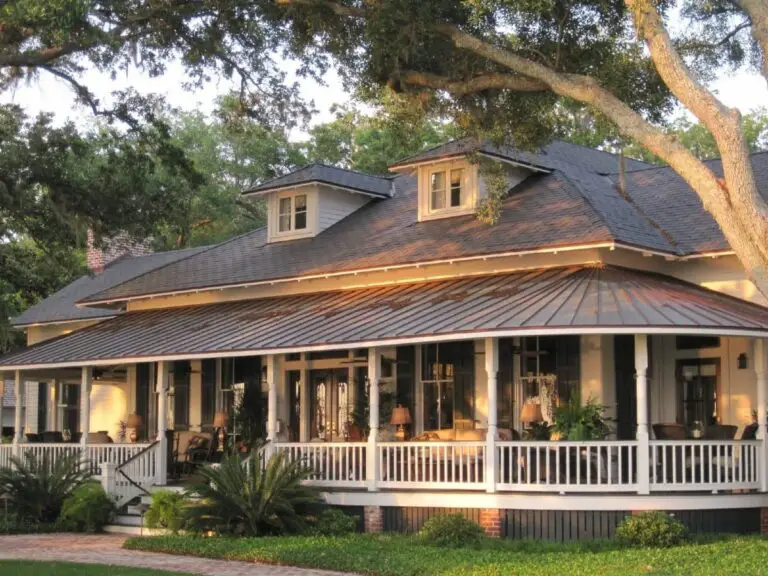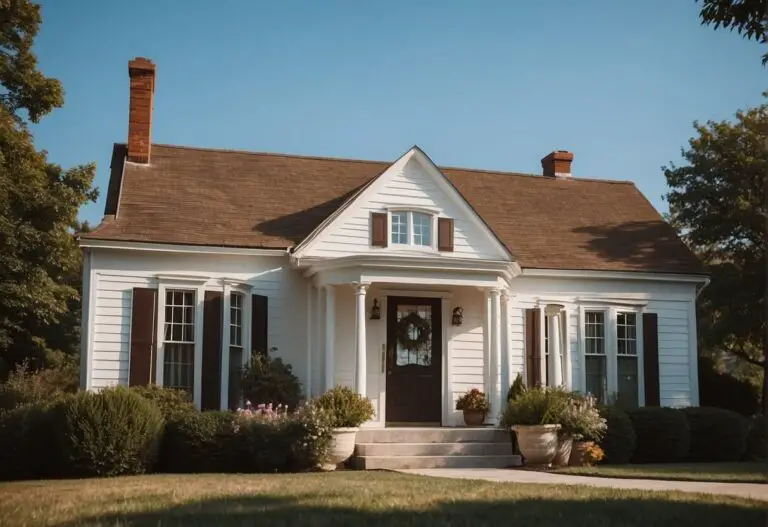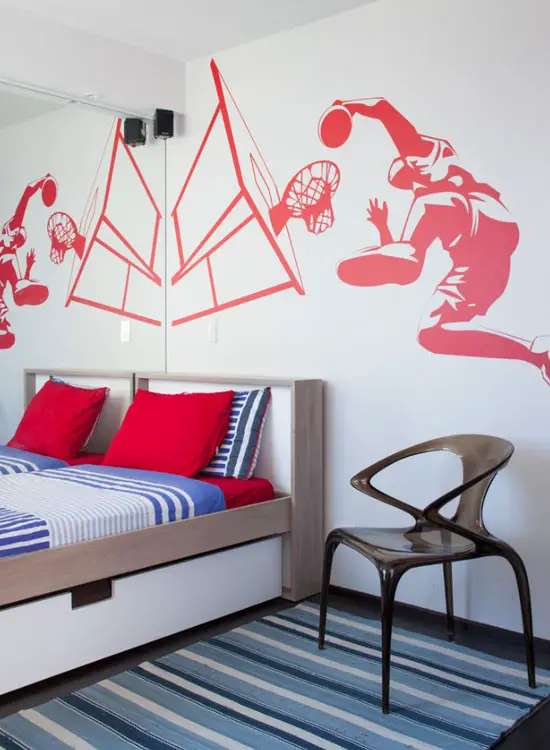30+ Easy & Inexpensive Paver Patio Ideas And Designs
Paver patios have become a sought-after feature in home remodeling, and for good reason. Not only can they add significant value to your property, but they also provide an inviting space for family and friends to gather. The beauty of paver patios lies in their versatility – you can create a cozy nook or an expansive outdoor living area, depending on your design preferences. What’s more, paver patios don’t have to break the bank.
Many designs can be achieved with minimal labor costs, making them an accessible option for homeowners on a budget. Jennifer Marie, founder of Holapaints, recommends using high-quality furniture sprayers to give old wooden patio furniture a fresh makeover, which can also add to the overall aesthetic appeal. If you’re looking for inspiration on how to create an affordable paver patio, here are 30 design ideas that won’t dent your wallet:… (rest of the original text remains unchanged)
30 paver patio ideas on a budget
While gravel may seem like the most affordable option for a patio, there are plenty of budget-friendly alternatives to explore. In fact, with some creativity and resourcefulness, you can create a beautiful outdoor space without breaking the bank. If you’re looking for inspiration, here are thirty paver patio ideas that won’t drain your wallet.
Gridded paver patio
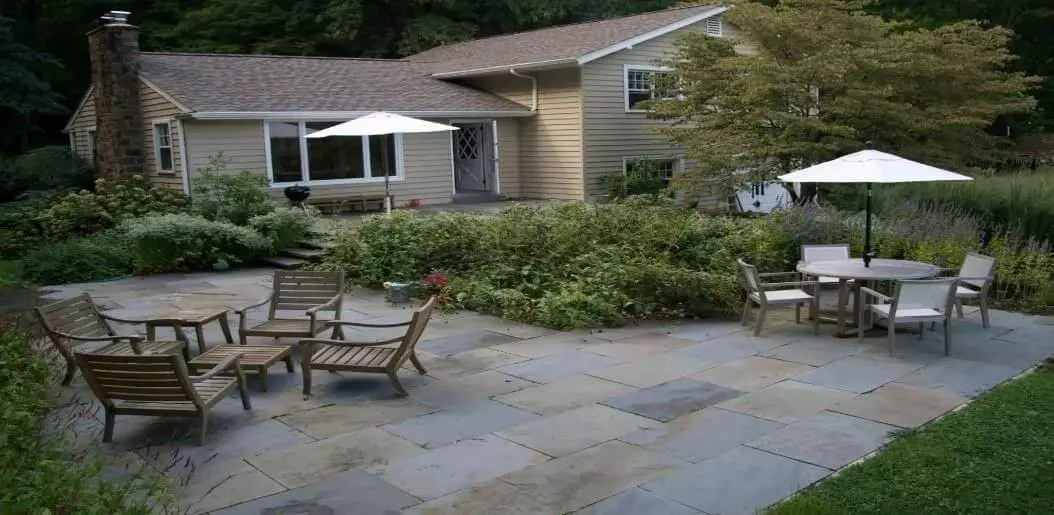
The classic simplicity of neutral-toned pavers laid out in a grid pattern against the lush backdrop of nature’s landscape offers a timeless and budget-friendly design solution. For a more elegant yet eye-catching approach, consider pairing round seating with an outdoor umbrella and flagstone grids, which exude a sense of refinement. The understated charm of gridded paver patios is unmatched in its ability to create a welcoming atmosphere.
Paver patio with an open view
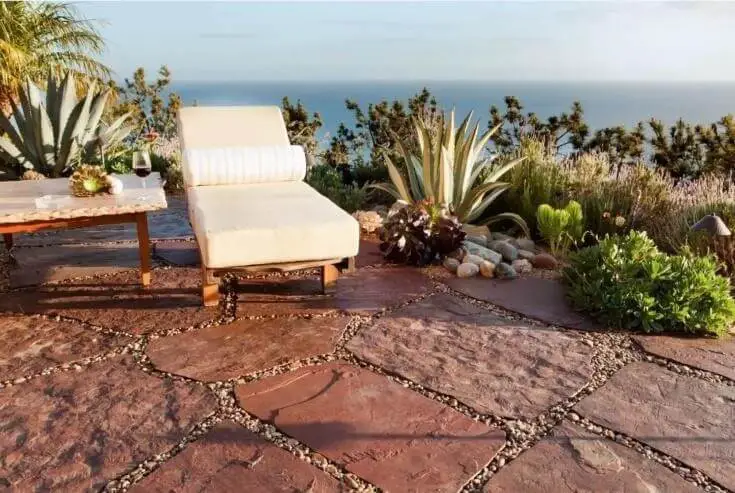
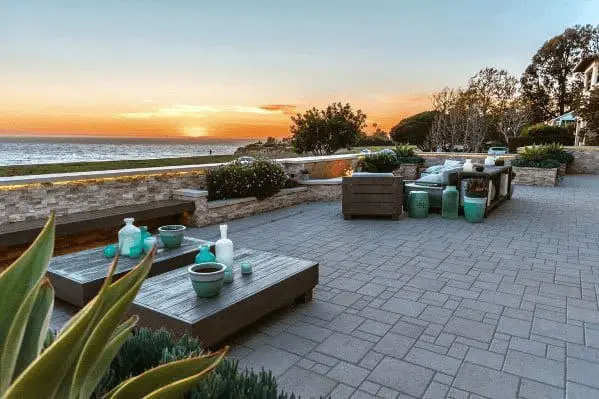
Opting for an open-view paver patio can be a wise decision when you’re blessed with an elevated property offering stunning vistas of the open sea, rolling fields, or a picturesque vineyard. To add a touch of rugged charm to your outdoor space, consider installing irregularly shaped flagstones that exude a natural, unpolished beauty. The addition of pea gravel between the stones will create a visually appealing contrast and texture.
To further enhance the ambiance, design a thoughtfully curated landscape, incorporate comfortable seating areas, and illuminate the space with strategic lighting to transform your patio into an idyllic haven perfect for taking in the breathtaking views at night.
Modern neutrals
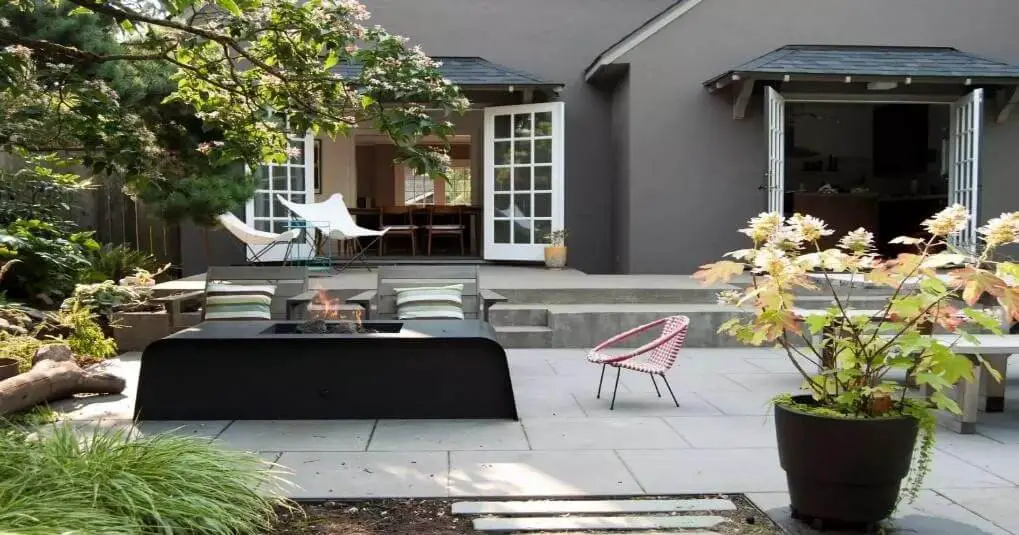
Crafting a minimalist-modern suburban patio relies on harmonious balance between neutral hues and clean lines. Begin with dark gray or charcoal pavers as the foundation, juxtaposed against a lush tropical backdrop. To inject modernity, replace traditional wooden seating with a sleek mid-century modern couch, its angular lines adding visual interest. A mini countertop firepit serves as a striking centerpiece, further elevating the space’s contemporary aesthetic.
Zen style
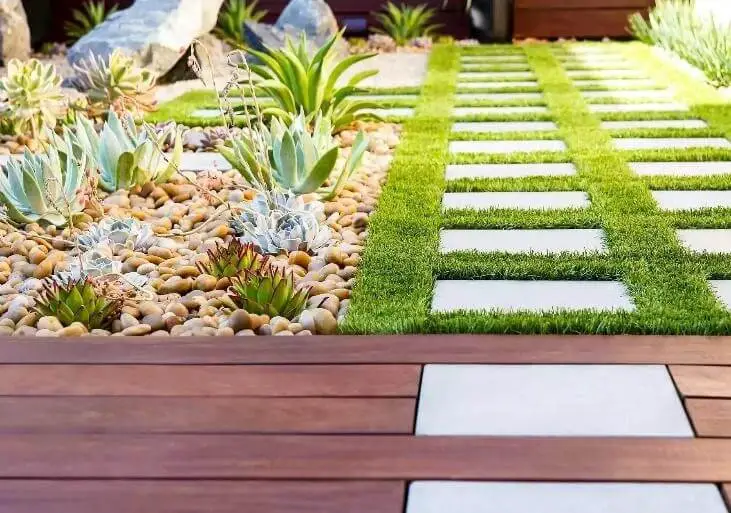
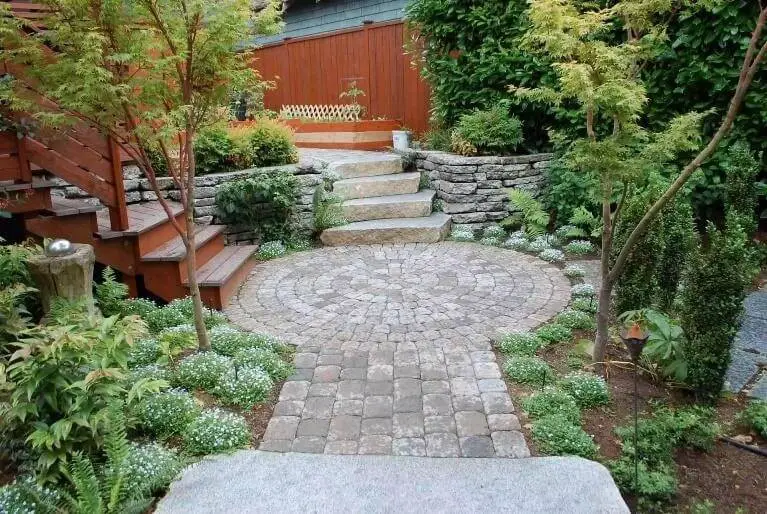
The patio design is rooted in timeless balance, achieved through the harmonious blend of natural elements such as wood, stone, and concrete. To elevate your outdoor space, consider installing a hardwood patio deck with bluestone pavers creating a meandering walkway that can be extended to connect seamlessly to your main house or garden.
Bordering the walkway with lush turfgrass adds a touch of serenity, while a plush pebble garden and strategically placed succulents and tropical plants complete the patio’s Zen-inspired ambiance.
Brick block paver patio
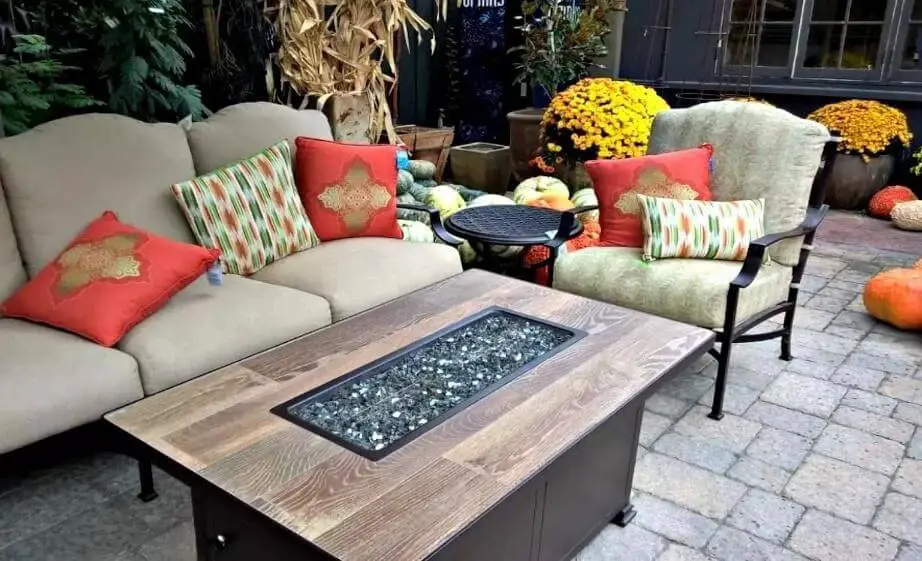
For a subtle outdoor surface that won’t dominate the surrounding landscape, consider using blocked bricks instead of flagstone or cobblestone. This approach yields a smooth, uniform finish. To blend seamlessly with your surroundings, opt for natural stone-colored blocks in shades like bluestone or gray. These earthy hues provide a calm backdrop for adding pops of color through seating and throw pillows.
Take it to the next level by incorporating a firepit and coordinating landscape features, which will create a cohesive and inviting outdoor space.
Small corner patio
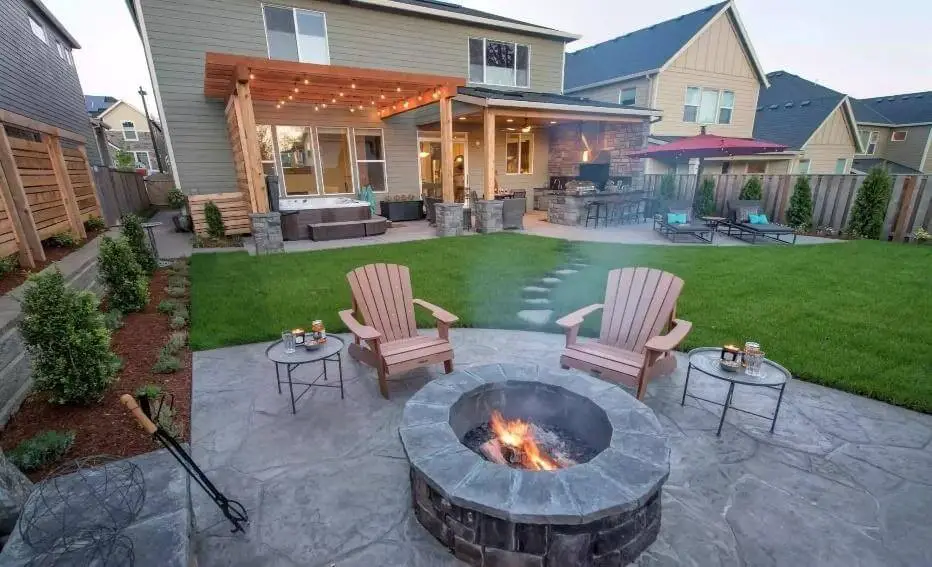
When limited by a compact backdoor space, cleverly designating a corner patio can still bring the outdoors in. A cozy gathering spot featuring a firepit and 2-3 chairs nestled at the end of a meandering garden walkway creates an inviting atmosphere. Strategically placing this retreat across a small lawn adds an air of sophistication to your suburban home.
Elevate the design by incorporating dark-colored flagstone or cobblestone pavers that mirror the firepit, resulting in a sleek and cohesive look.
Private paver patio
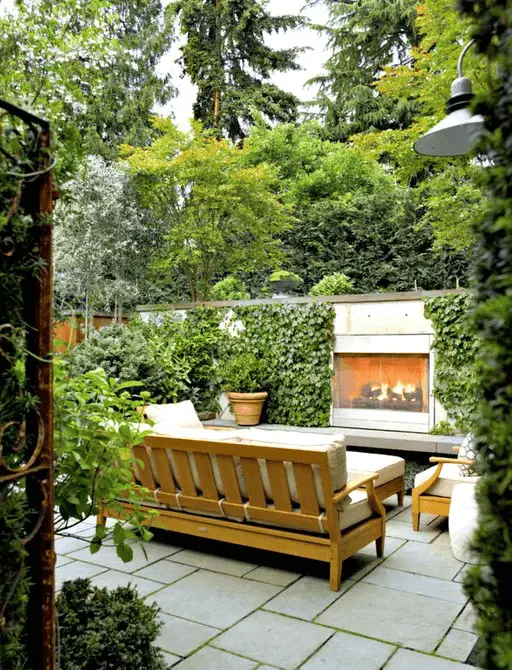
To create an idyllic, secluded retreat reminiscent of a hidden world like Bridge to Terabithia, start by constructing sturdy poles for climbers to grow on and enclose the entire space with a fence. A wall-mounted fire pit is a great addition, accompanied by more climbers along its sides. Incorporate wooden seating areas with removable cushions for enhanced flexibility during unpredictable weather conditions.
For a natural look, use ashlar bluestone pavers, complemented by thin layers of turfgrass or pea gravel in between the pavers.
Pergolas and pavers mix
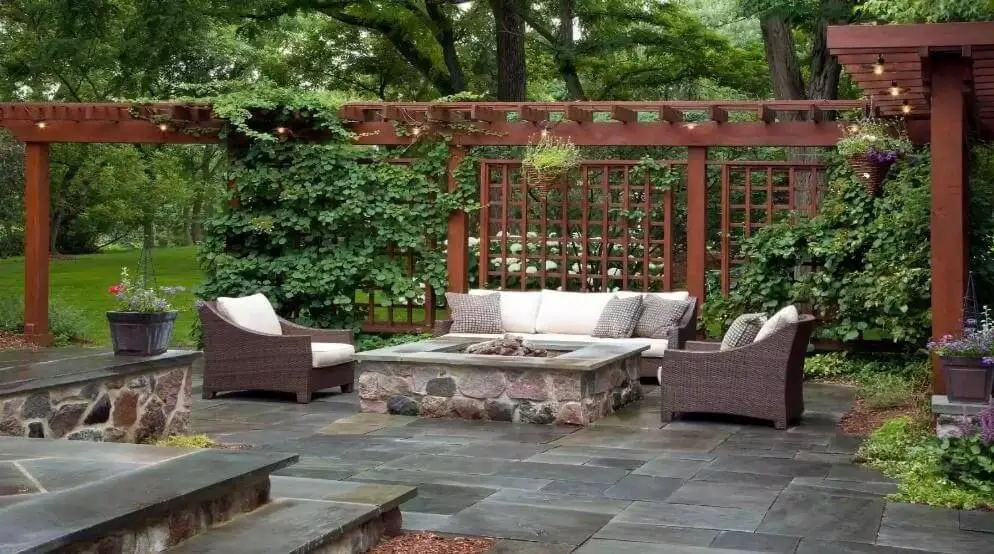
Elevate your outdoor living space by combining classic elements with modern functionality. Consider building a pergola and incorporating sealed irregular shaped bluestone blocked pavers, which provide a unique textured look. A firepit made from rough natural stones can be the focal point of your design, surrounded by comfortable rattan or wood benches. To create a natural barrier, construct slatted pergolas that allow for lush greenery to grow between the slats.
Additionally, install subtle lighting in the pergola posts to transform your paver patio into a cozy oasis at night.
Circular paver patios
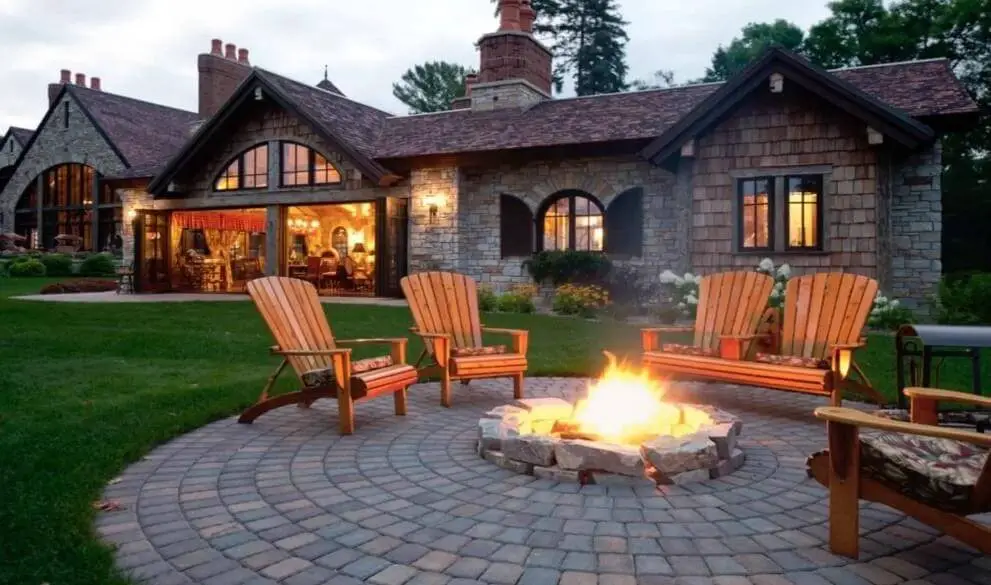
Elevate your stone house and expansive lawn with the addition of circular corner paver patios. To add visual interest, consider incorporating blocks of blue and charcoal gray bricks to create a striking contrast. The pièce de résistance can be a rustic firepit centerpiece crafted from unpatched cobblestone, which will immediately evoke a cozy atmosphere. Complete the look by adding wooden benches and an outdoor grill situated strategically on one side – voilà!
Curved walls
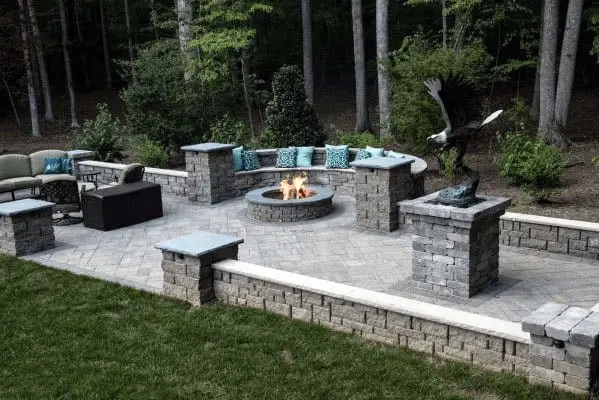
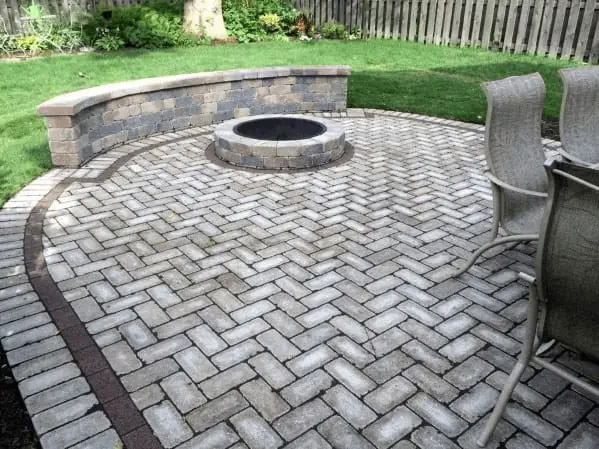
While traditional box-type patios are common, incorporating curved walls can elevate the design to new heights. These curved elements can serve a dual purpose as additional seating or even a secluded stone bench with plush cushions. However, it’s essential to ensure that all other areas are optimized for use. To achieve this, consider adding another seating arrangement on one side, a fire pit in the center, and a grill on the opposite side.
For a cohesive look, opt for neutral-colored stone pavers, bluestone pavers, or herringbone/chevron-patterned block bricks that create a visually appealing backdrop.
Poolside patio paver
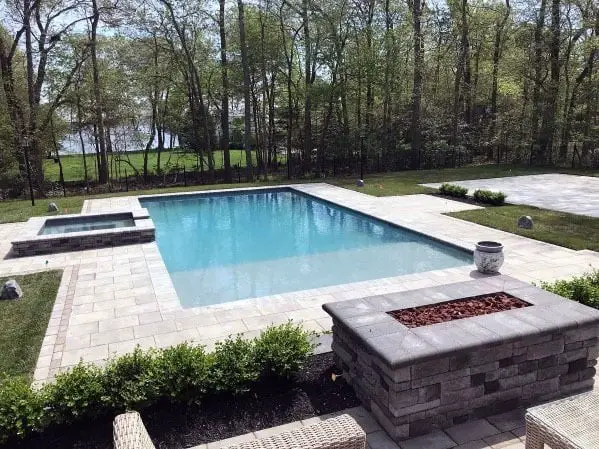
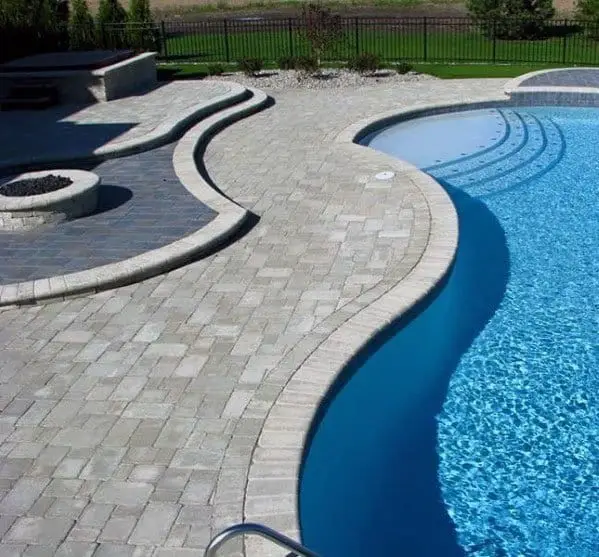
When designing a poolside area that connects to a patio, it’s only natural to extend the same aesthetic and functionality to the surrounding space. Consider incorporating stone pavers to create a cohesive look that complements your firepit and outdoor living areas. This stylish choice will not only tidy up the poolside but also provide a seamless transition between the two spaces.
For a unique and visually appealing effect, you can opt for ashlar stone pavers, bricks, or bluestone/flagstone pavers accompanied by pea gravel or thin grass in between. Alternatively, blocked bricks offer another attractive option to consider.
Backyard patio grill
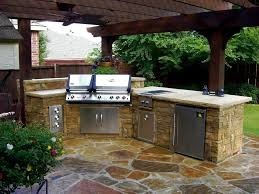
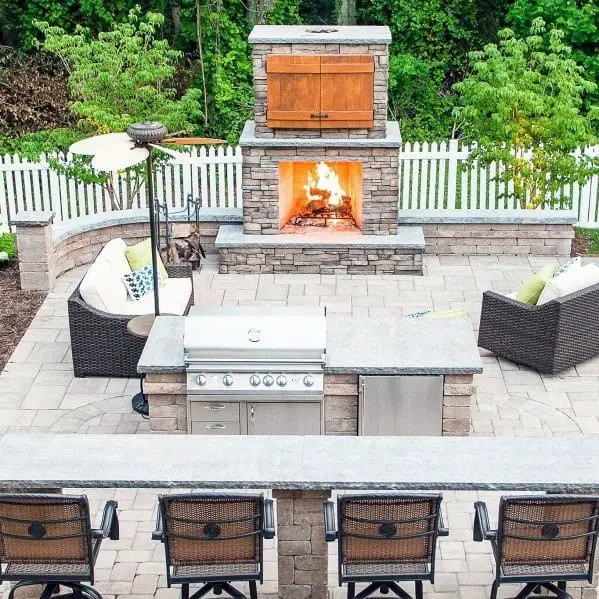
Transform your outdoor living space by combining a dirty kitchen, bar, fire pit, and barbecue grill into one cohesive area. The result will be a unique blend of functionality and ambiance. Imagine a brick fire pit on one side, paired with a brick oven mounted on a stone wall on the other – a true showstopper! To further enhance the space, consider incorporating a granite countertop and surround it with rustic brick or flagstone flooring.
Ditch traditional seating options like wood or rattan and opt for softer, more inviting alternatives instead. Add some warm lighting to complete the ambiance. Alternatively, top off your patio with a pergola featuring sealed flagstones in a variety of colors – orange, gray, and blue work well together.
Natural stone paver patios
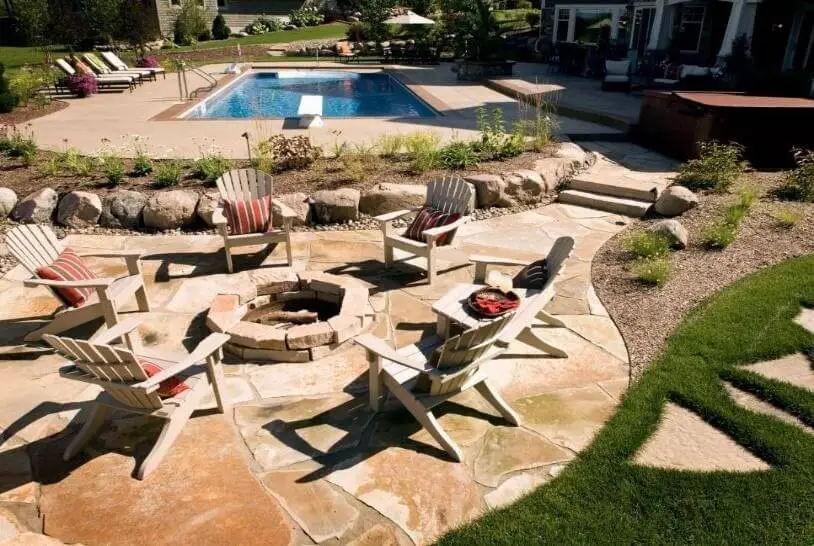
To create a modern patio with diverse stone elements across your entire backyard, consider incorporating a natural stone paver patio into your design. For the poolside area, you can pair square, unsealed natural stones with pea gravel or lush grass in between, creating a visually appealing contrast.
Meanwhile, the firepit installation on the opposite side can feature sealed, irregularly-shaped natural stones complemented by wooden benches and a rustic cobblestone firepit as its centerpiece.
A patch of carefully manicured landscape can serve as a natural divider between these two distinct areas.
Cottage gardens and rough stone pavers

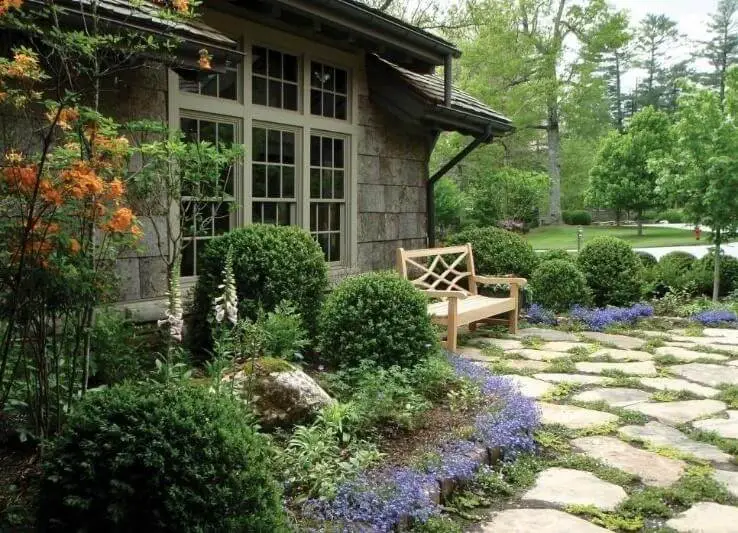
To create a charming cottage garden ambiance, reminiscent of the stone and wood features of your home’s exterior, consider using thick, irregularly shaped flagstones or cobblestones as part of your paver installation. Leave sufficient gaps between each stone to allow for lush grass growth, which will add texture and visual interest to the overall design.
To further enhance the cottage garden aesthetic, select a variety of low-maintenance perennials and flowering shrubs that thrive in partial shade and require minimal pruning or upkeep.
Edged stone pavers
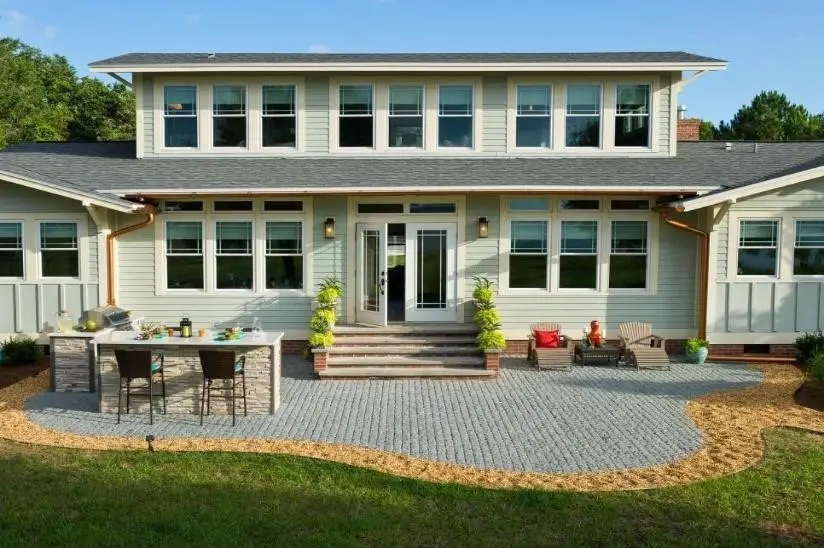
To elevate your blocked pavers or brick back patio, consider incorporating accent edges. You can achieve this using fine, colored gravel, cement, and smaller bricks. Additionally, you can incorporate other elements like vinyl edging or metal accents. The benefits of having accent edges include effective weed suppression. To further enhance the space, consider adding typical patio features such as wooden benches, cobblestone and granite countertops, a small bar, and even a fire pit if desired.
Brick and ashlar
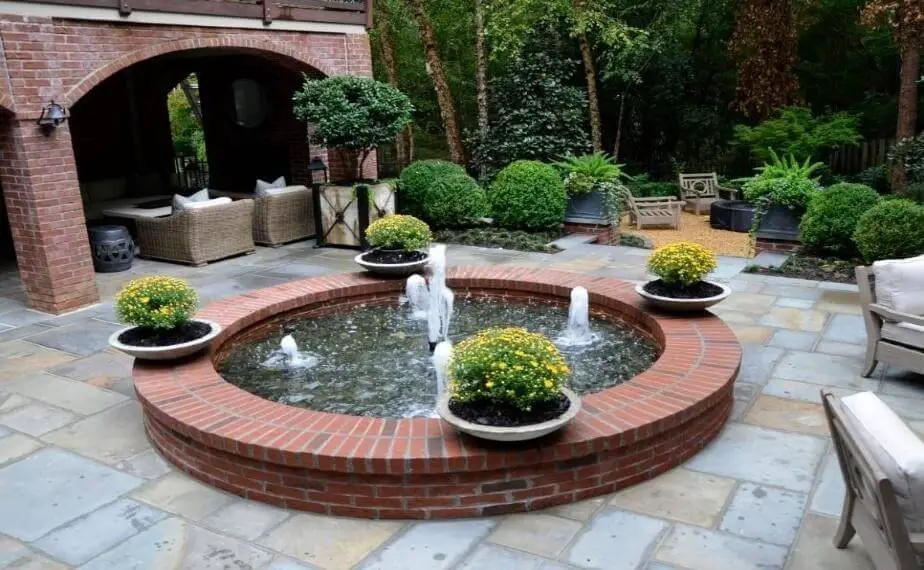
While traditional patio designs often feature either brick or ashlar stone, combining both can create a unique and captivating ambiance. To infuse your outdoor space with a Hispanic flair, consider pairing blocked ashlar pavers with an orange brick focal point – such as a fountain or fire pit – to serve as the central anchor. By distributing seating areas throughout the patio, you can create distinct zones for relaxation and socializing.
Additionally, incorporating an outdoor dining area that seamlessly connects to the brick firepit and ashlar floor can foster a sense of community and warmth.
Firepit, pool, and bar
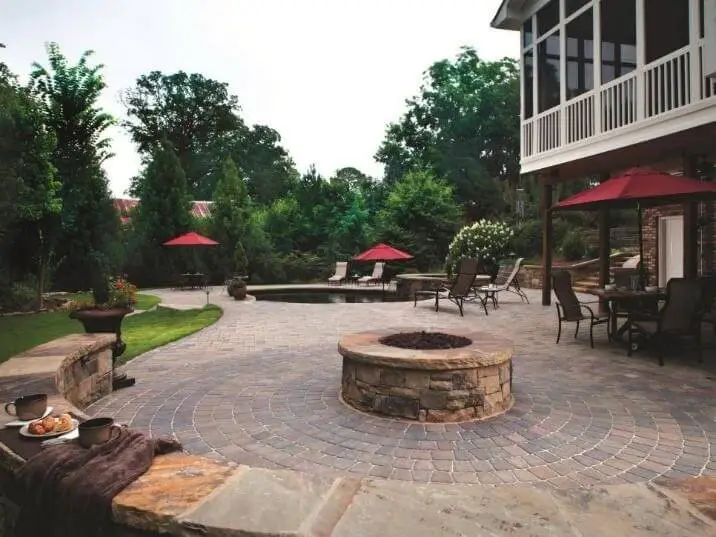
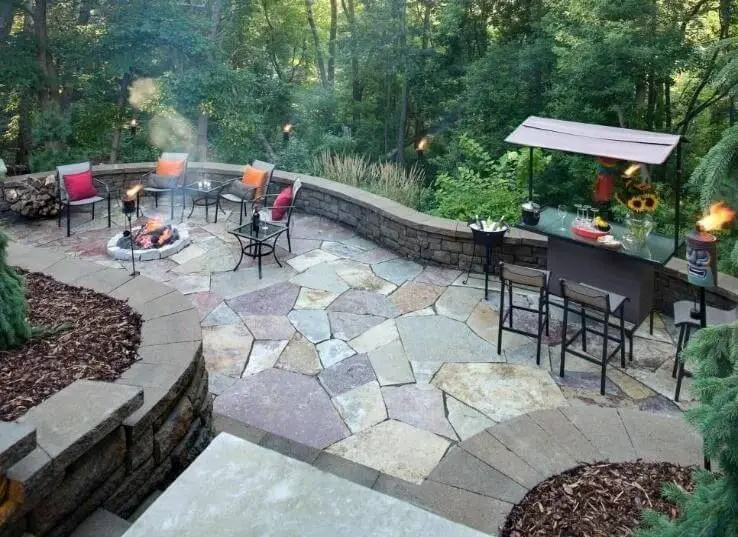
To create a cohesive look, consider linking these patio elements together with a single, harmonious ensemble. For areas prone to windy or rainy conditions, darker colored cobblestones or flagstones are ideal for ensuring a clean and weather-resistant finish that complements your home’s architectural style.
Adding curved walls can also introduce visual interest and dynamic flair to the design. Meanwhile, focus on the landscaping by incorporating lighting features in the bar and poolside areas.
A fire pit near the pool or a corner fixture on one side can add warmth and ambiance.
Terraced patio pavers
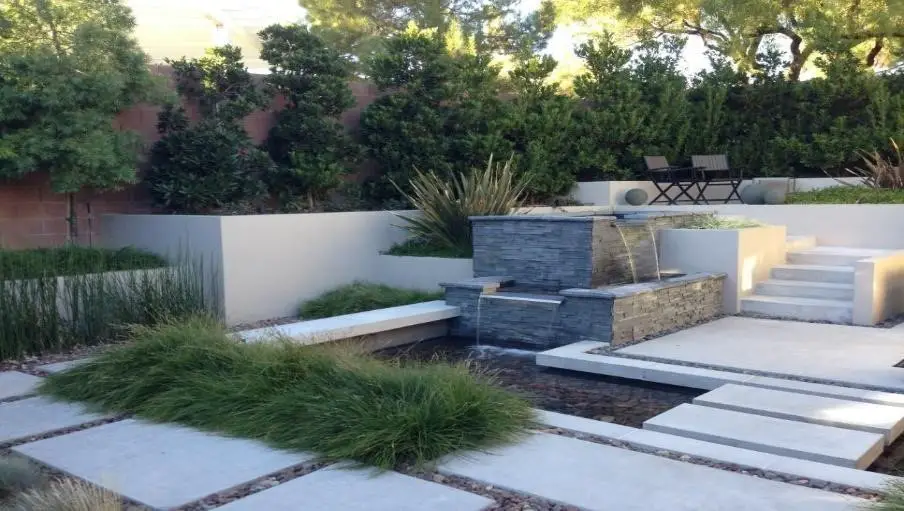
When designing an outdoor space, whether it’s a sprawling patio or a cozy compact one, incorporating a terraced layout can be a great decision. This design not only adds visual interest with its varying elevations but also provides opportunities to appreciate the surrounding landscaping. Additionally, terracing allows for the creation of unique angles and vantage points that can greatly enhance the overall aesthetic.
To take this design to the next level, consider incorporating water features like modern fountains set amidst bluestone or ashlar stone pavers. The sound of flowing water and visual appeal of these elements can be especially inviting. Furthermore, the elevated firepit area above can be further enhanced by adding garden lamps and natural plant fences that work together to create a sense of seclusion, making the space feel even more intimate and cozy.
Naturally rustic
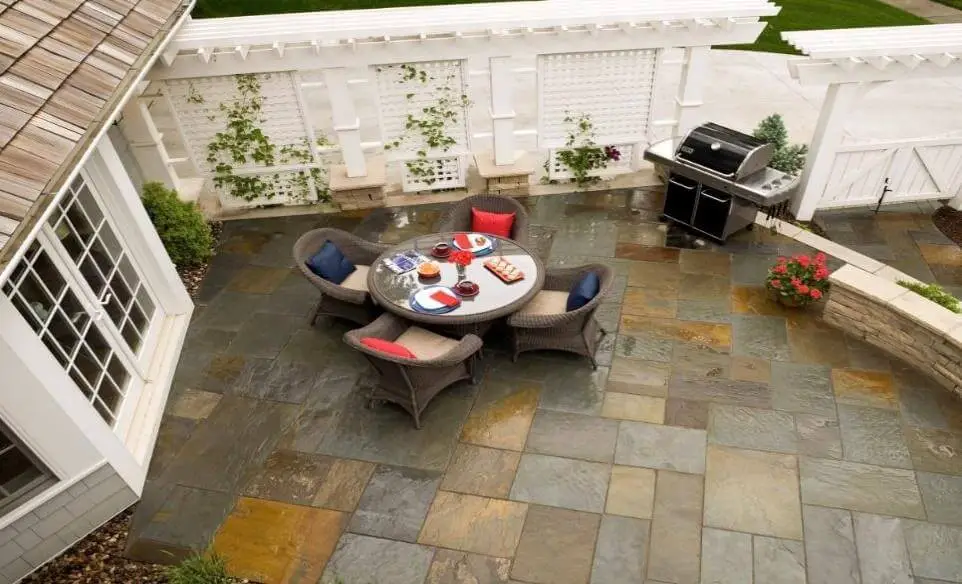
There’s something special about a back patio that exudes a timeless charm, as if the pavers have been there since the beginning of time. To achieve this look, consider incorporating grayish blue and orange-brown tones into your flagstone paver design. The key is to create a blocked pattern, which adds depth and visual interest to the space.
To further enhance the ambiance, surround the patio with slatted boards that let in natural light while maintaining a sense of separation from the rest of the yard. Finally, add some outdoor cooking elements like an oven or grill, along with sturdy wooden benches, to create a cozy gathering spot for friends and family.
Minimalist
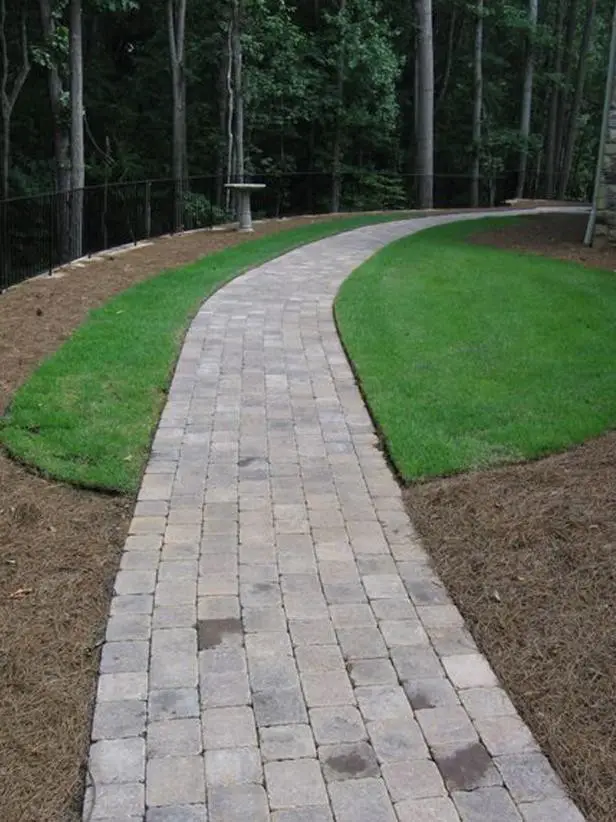
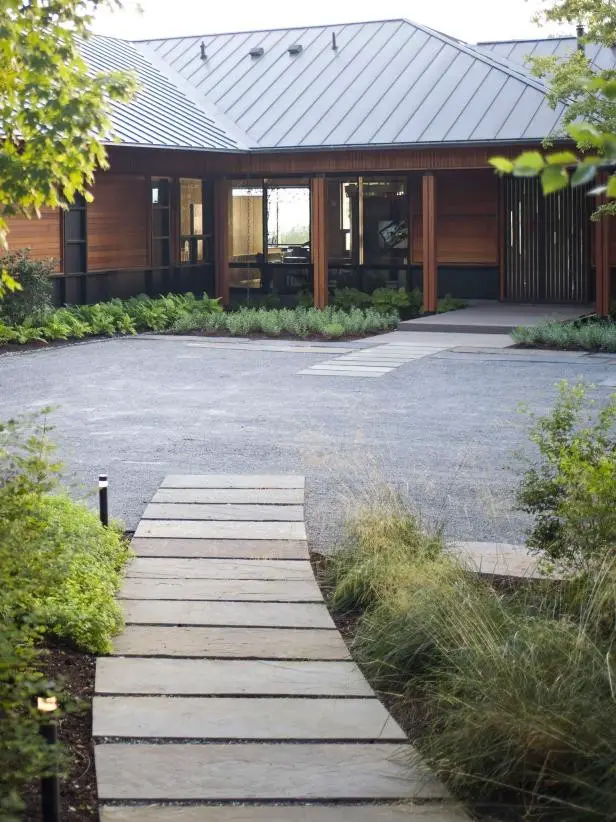
For a sleek, understated aesthetic, consider pairing inexpensive gravel and cobblestone for a harmonious blend. Rather than meticulously arranging various elements like bars, benches, firepits, and lighting features, you can create a simple yet striking walkway on your patio. Pour gravel throughout the area designated for the fire pit and seating, then install stone paver pathways that extend to the backdoor, pool, or garden.
Alternatively, design a longer pathway leading to the garden, punctuated by a lush patch of turfgrass.
Firepit centerpiece
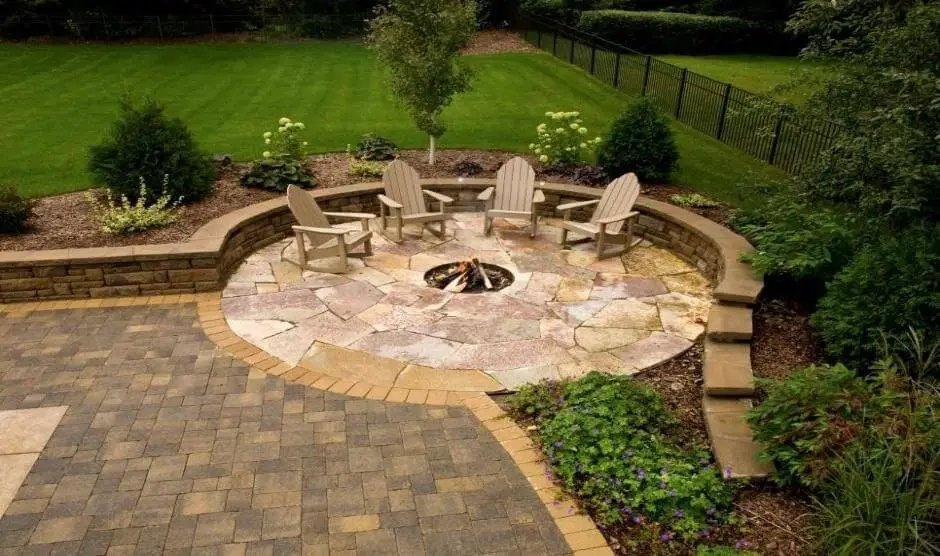
Building upon the curved patio design, a blocked paver pathway is created to guide visitors to the firepit area, serving as its central focal point. This pathway, much like the surrounding patio, features circular paver walls and a blocked paver floor that serves as a natural boundary. To add visual interest, the walkway and firepit area’s flooring can be designed with contrasting colors, creating a beautiful juxtaposition.
The resulting space fosters an intimate atmosphere, perfect for families and friends to gather around the warmth of the firepit.
Small cozy nook

Create a unique outdoor oasis by designing separate patio areas for your home’s various outbuildings, such as tool sheds, home offices, or garden gazebos. This allows you to create intimate nooks for each space using sealed stone pavers and small seating sets. To tie the entire area together, incorporate turfgrass and meandering stone paver walkways that radiate outward from your main patio, creating a visually appealing and functional layout.
Sunken seating

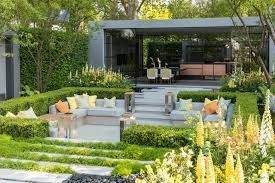
A subtle yet impactful adjustment to your patio’s default setup is the introduction of sunken seating. This design element not only adds visual drama but also provides an intimate atmosphere, perfect for large or small outdoor spaces alike. The incorporation of low-lying shrubs as natural barriers amplifies this sense of seclusion, creating a cozy retreat that’s ideal for relaxing with loved ones.
To create a versatile seating area, consider incorporating curved or box-shaped sunken seats, topped with plush cushions to accommodate a group of friends. For the floor, opt for charcoal gray block pavers, or add a touch of rustic charm by inserting pea gravel between the pavers. As the pièce de résistance, finish off your design with a firepit at its center, serving as a warm and inviting focal point.
Paver patio ideas on a budget – FAQs
What is the cheapest patio paver?
When it comes to patio pavers, cost is a significant factor for many homeowners. While gravel is often considered one of the more affordable options, costing between $6-$10 per square foot and easily manageable as a DIY project, there are even cheaper alternatives. Thin concrete pavers, also known as brick pavers, take the top spot as the cheapest option at around $2.50-$5 per square foot.
Other contenders for the most budget-friendly patio paver include tumbled concrete bricks, half-bricks, and interlocking concrete, all of which fall within the range of $3-$7 per square foot. On the other end of the spectrum, natural stones such as flagstones, bluestones, granite, and ashlar are significantly more expensive, costing anywhere from $7-$16 per square foot.
Is a paver patio a good investment?
The benefits of incorporating patio pavers into your outdoor space are twofold. On the one hand, these hardscaping elements can greatly enhance the ambiance of your home by creating inviting areas perfect for social gatherings. Whether you’re hosting regular soirees or simply want to provide a comfortable spot for family members to relax, paver patios offer a versatile and functional solution.
On the other hand, patio pavers are also a valuable addition to your property from a real estate perspective. A well-designed and expertly installed paver patio can pay dividends when it comes time to sell your home, providing a strong return on investment.
How much value does a paver patio add?
A recent study by the National Association of Realtors (NAR) and the National Association of Landscape Professionals (NALP) highlights the significant impact of outdoor spaces on property values. Specifically, their research suggests that a well-designed paver patio can increase a home’s value by as much as 69%. To illustrate this point, consider a hypothetical paver patio measuring 18 feet by 20 feet, which would cost approximately $7,200 to install.
According to the NAR and NALP, this investment could potentially boost a property’s value by up to 69%, making it a worthwhile consideration for homeowners looking to enhance their outdoor living areas.
Is a paver patio cheaper than concrete?
While a paver patio may come with a higher upfront cost compared to concrete, the installation labor costs and material costs are roughly double those of poured or stamped concrete. On the other hand, the added durability and value that paver patios bring to a home ultimately result in long-term savings.
What lasts longer concrete or pavers?
While poured concrete has a typical lifespan of around 25 years, patio pavers can endure for up to 50 years or more. However, it’s essential to consider various factors that influence their longevity, including the quality of installation, maintenance habits, and local climate conditions.
How long do paver patios last?
With proper installation and regular upkeep, a paver patio can enjoy a remarkably long lifespan, with the average duration spanning a impressive 25 to 50 years. This remarkable longevity is largely attributed to the durability of the pavers themselves, which are designed to withstand the rigors of daily use, as well as any potential environmental factors that may arise.
Conclusion
Paver patios stand out for their resilience, lasting power, and breathtaking visual appeal. While simplicity can be achieved with gravel and harmonious landscaping, adding modern elements like firepits, seating areas, and lighting fixtures can elevate the design to new heights. The possibilities are truly endless, making it rare to exhaust creative ideas when designing a backdoor space.
What’s required is a flair for innovation, the willingness to DIY, and an eye for detail that will bring your vision to life. These principles underpin the budget-friendly patio paver ideas presented here, and we hope they ignite a spark of inspiration for your future outdoor project.
Related Posts
When it comes to your farm business, selecting the right equipment is crucial. The same applies when deciding on fencing for your home or pairing garage doors with house colors. In this mix of informative topics, we’ll explore how to make these choices effectively. Firstly, finding the perfect equipment for your farm requires considering factors such as budget, purpose, and durability. Next, installing a fence around your property can provide added security and curb appeal.
For instance, what color garage door complements a green house? Understanding gratuity etiquette for home services is also vital, especially when dealing with driveway sealers. Lastly, a career path in landscape architecture awaits those who pursue their passion and acquire the necessary skills.

